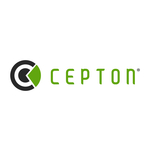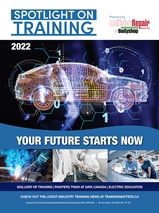- Collaboration enriches NVIDIA DRIVE Sim’s library of vehicle, sensor and traffic models for accurate testing and validation
- Cutting-edge simulation platform provides true-to-life representation of Cepton lidar applications across various automotive use cases
- Users can test multiple Cepton lidars in a high-fidelity virtual setting to accelerate and scale deployment
SAN JOSE, Calif.–(BUSINESS WIRE)–$CPTN #automotive–Cepton, Inc. (“Cepton” or the “Company”) (Nasdaq: CPTN), a Silicon Valley innovator and leader in high-performance lidar solutions, announced that it is collaborating with NVIDIA to add Cepton lidar models into NVIDIA DRIVE Sim™.
DRIVE Sim is an end-to-end simulation platform that enables large-scale, physically based multi-sensor simulation to support the development and validation of autonomous driving.
As a member of the NVIDIA DRIVE Sim ecosystem, Cepton is adding an accurate digital twin of its lidar technology to the platform. These models will help automakers and autonomous vehicle developers accelerate lidar deployment while minimizing real-world test driving.
The Cepton lidar extension offers high-fidelity simulation and visualization of Cepton’s state-of-the-art lidar sensors. Cepton is the first lidar partner to provide dual near- and long-range simulation. This capability is simulated and demonstrated in NVIDIA’s DRIVE Sim platform. The two-fold detection enables blind spot elimination (near-range Nova lidar) coupled with obstacle detection at highway speeds (long-range Vista-X series), across various true-to-life driving scenarios.
By working with NVIDIA, Cepton aims to expedite the development of lidar-based assisted and autonomous driving functionalities for global customers. DRIVE Sim enables users to easily work with Cepton’s lidar models in a virtual setting to prototype a range of sensor integration options, visualize lidar scan patterns in different environments and optimize their sensor configurations with tunable settings such as frame rate, field of view and range of interest.
In addition to helping users identify the right Cepton lidar sensors for their specific application needs, simulation also helps developers integrate Cepton lidars with other sensor modalities, such as camera and radar. Beyond testing and integration, Cepton’s lidar models can be used with NVIDIA DRIVE Replicator to generate synthetic datasets for training AI Deep Neural Networks for multi-sensor fusion and AV perception.
“Lidar is essential to autonomous mobility, but deploying lidar at scale entails extensive testing and validation, sometimes in scenarios difficult to access in real life,” said Dr. Jun Pei, Cepton’s co-founder and CEO. “Simulation plays a significant role in bridging the gap between concept and deployment, and that’s why we are thrilled to offer access to simulated models of our lidars on the NVIDIA DRIVE Sim platform.
“With DRIVE Sim’s powerful ray-tracing engine, we can build fully configurable, physically accurate models of our entire suite of products. These capabilities will enable developers to be more efficient and build safer products.”
Zvi Greenstein, general manager for Simulation at NVIDIA, said: “A rich sensor ecosystem is critical for robust AV development and validation in simulation. With the addition of Cepton sensor models, developers have access to a physically based lidar model that will significantly reduce the need for real- world data collection and testing.”
Cepton’s patented lidar technology enables an optimal balance between performance, reliability and cost efficiency. Cepton offers a comprehensive portfolio of lidar solutions, including lidar sensors for near-range to ultra-long range and intelligent perception solutions for automotive and smart infrastructure applications. With their compact size and seamlessly embeddable design, Cepton lidars can be integrated in a variety of vehicle locations without disrupting the appearance of modern passenger cars. Multiple simulated lidar integration options will be available as part of Cepton’s lidar models on NVIDIA DRIVE Sim.
DRIVE Sim is built on the NVIDIA Omniverse platform for connecting and building custom 3D pipelines, and is architected from the ground up with multi-GPU support for large-scale, multi-sensor simulation. It is open, modular and extensible, leveraging the Omniverse Kit SDK, so developers can build compatible models, 3D content and validation tools. Users can create their own plugins or choose from a rich library of vehicle, sensor and traffic models provided by DRIVE Sim ecosystem partners such as Cepton.
About Cepton, Inc.
Cepton is a Silicon Valley innovator of lidar-based solutions for automotive (ADAS/AV), smart cities, smart spaces and smart industrial applications. With its patented lidar technology, Cepton aims to take lidar mainstream and achieve a balanced approach to performance, cost and reliability, while enabling scalable and intelligent 3D perception solutions across industries.
Cepton has been awarded a significant ADAS lidar series production award with Koito on the General Motors Business. Cepton is also engaged with all other Top 10 global OEMs.
Founded in 2016 and led by industry veterans with decades of collective experience across a wide range of advanced lidar and imaging technologies, Cepton is focused on the mass market commercialization of high-performance, high-quality lidar solutions. Cepton is headquartered in San Jose, CA, and has a center of excellence facility in Troy, MI, to provide local support to the OEM and Tier 1-studded Detroit area. Cepton also has a presence in Germany, Canada, Japan, India and China to serve a fast-growing global customer base. For more information, visit www.cepton.com and follow Cepton on Twitter and LinkedIn.
Contacts
Cepton, Inc. Contact
Media: Faithy Li, media@cepton.com





















